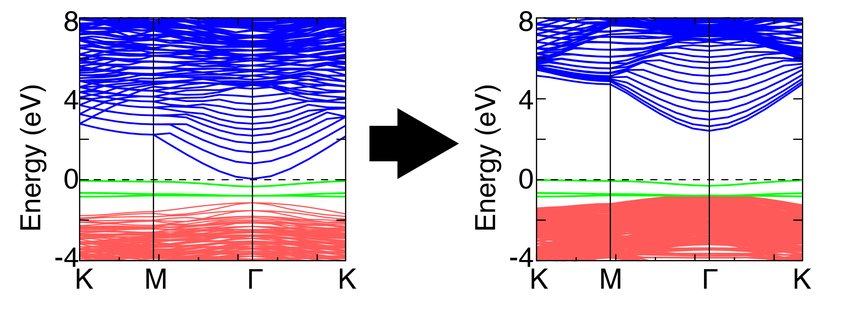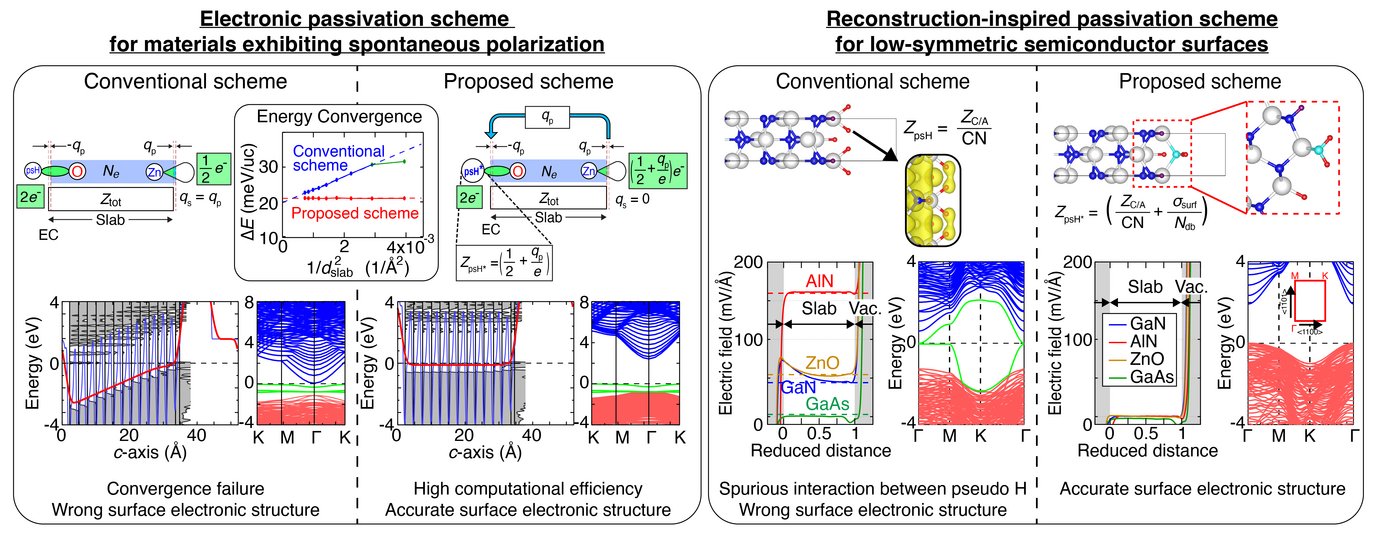
Electronic Passivation Schemes for Materials Exhibiting Spontaneous Polarization
Using technologically interesting examples, such as wurtzite surfaces, we develop a robust passivation scheme for density-functional-theory surface calculations of materials exhibiting spontaneous polarization. The novel approach enables computationally efficient and accurate surface electronic structure calculations.
Semiconductor surfaces play a pivotal role in modern technology related to catalysis, electronics, and energy applications. The most common approach to describe surfaces in density-functional theory is the repeated slab geometry based on periodic boundary conditions. A common strategy employed to avoid spurious charge transfer from one side of the slab to the other when modeling semiconductor surfaces is to passivate partially filled surface dangling bonds at the backside of the slab.
In this project, we demonstrate that the conventional passivation scheme using pseudo-Hydrogen atoms (psHs) breaks down for materials exhibiting spontaneous polarization1: The conventional scheme fails to describe the asymptotic bulk limit, which results in a significant increase of computing resources for accurate energetics and a fundamental limitation in describing the materials surface electronic structure.
We, therefore, developed a passivation method that takes the polarization effect into account. The improved scheme correctly describes the semi-infinite bulk limit, significantly speeds-up the convergence of total energies with respect to system size (i.e., high computational efficiency). It furthermore guarantees an accurate description of the surface electronic structure, as demonstrated by electrostatic potentials and band structures.

However, passivating low symmetry semipolar planes in wurtzite, which containe cations with more than one dangling bond, introduces deep states into the fundamental band gap, due to unintended bond formation between neighboring cations and psHs. To address this issue, we extend the aforementioned passivation scheme by utilizing the principles of surface reconstructions: The stoichiometry of the slab's backside is altered by adsorbing the minimum necessary number of native anions to passivate the two broken cation dbs. This extension has been successfully applied to compute the energies and band structures of III-nitride, III-V, and II-VI semipolar surfaces.
The improved passivation method we developed accounts for polarization effects1 and employs the concept of surface reconstructions2. It describes the semi-infinite bulk limit correctly and significantly speeds-up convergence of total energies with respect to system size, ensuring a high computational efficiency. Most importantly, it accurately describes the surface electronic structure, ensuring a correct representation of electrostatic potentials and band structures. This scheme is generic and robust and can be straightforwardly employed in DFT investigations of low-symmetry surfaces, as well as, in high-throughput and machine learning studies.
Acknowledgements

